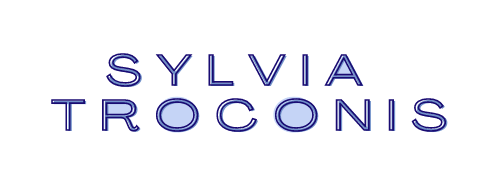Quick Guide To The Colors Of Science: Spectral Lights Of Elements As Inspiration In The “Hola” Part Of The "Hola Howdy Hello" Art Show At Georgetown Art Center
If you are at the Georgetown Art Center and are watching the “Hola, Howdy, Hello” show, you might be wondering why some pieces have elements names. Scroll down to find the one you are looking at for a brief explanation and enjoy.
This part of the exhibition is inspired in the SPECTRAL LIGHT OF ELEMENTS. The spectral light of elements is a distinctive array of lights (color lights), each representing a specific element from the periodic table, like a thumbprint for elements. No two sets of spectral lights are alike, providing a method to identify elements, even those in distant objects. An spectroscope breaks the light from a single material into its component colors like a prism separates white light the colors of the rainbow
Image extracted from https://astro3d.org.au/education-and-outreach/diy-smartphone-spectroscope/
This identification method is crucial for scientists studying celestial bodies such as Jupiter, stars, or Saturn. By analyzing the unique colors emitted or absorbed by these elements, scientists gain insights into the composition, temperature, and distance of these celestial objects.
Sylvia Troconis has been obsessed with this subject for years. She has worked in this subject for a long time during her professional career as an artist.
Aluminum: Lightweight, silvery metal renowned for its versatility and unique properties. In practical applications, aluminum is alloyed with other elements to create customized materials. Aluminum is one of the most abundant elements in the Earth's crust, making up about 8% of the Earth's solid surface.
Emission Spectrum Aluminum.
Excerpt from “Aluminum”
Sodium: A highly reactive and light metal with distinctive properties. In its pure form, sodium is rarely encountered in practical applications due to its extreme reactivity with air and water. Instead, sodium is commonly found in compounds, such as sodium chloride (table salt). Sodium-based compounds are utilized in a wide range of applications, including food seasoning, water treatment, and as a fundamental component in various chemical processes.
Emission Spectrum Sodium
Excerpt of “Sodium Doublet”
Hydrogen: It is the first element on the periodic table and is represented by the symbol "H." In its elemental form, hydrogen is a colorless, odorless gas. It is the lightest and most abundant element in the universe, making up a significant portion of stars and gas giants like our Sun and Jupiter. Hydrogen is also a fundamental component of water (H2O) and is commonly found in various compounds and molecules, making it a versatile and essential element in the world of chemistry and science.
The artwork is called "Almost Hydrogen" because the piece mimics the spectral colors of hydrogen, with a creative twist of eliminating blue and substituting red for orange.
Emission Spectrum Hydrogen
“Almost Hydrogen”
Vibranium: This is a fictional metal appearing in the Marvel universe (comics and movies). The pieces are called Vibranium when trying to explore random color combinations. Since the element is fictional, there is not a real spectra to adhere too, when creating the pieces.
Protactinium: With the symbol Pa and atomic number 91, is a dense, silvery-gray metal classified as a radioactive element. It is found in trace amounts in uranium and thorium ores. Due to its radioactivity and the fact that it is typically present in very small quantities, protactinium is not widely utilized in industrial or commercial applications. Instead, its primary significance lies in the realm of scientific research, particularly for researchers studying the behavior of radioactive elements and their applications in nuclear science.
Emission Spectrum Protactinium
Close up of “Protactinium”
Beryllium: A lightweight, steel-gray, and brittle alkaline earth metal, is relatively rare in the Earth's crust, typically found in various minerals. However, despite its utility, caution is warranted in its handling due to its toxic nature. Beryllium and its compounds pose health risks, particularly when inhaled, leading to chronic beryllium disease, a serious lung condition. Consequently, strict regulations govern the handling of beryllium in industrial settings.
Moreover, beryllium's versatility extends to its use in alloys. It is often alloyed with other metals to enhance their properties. Beryllium copper, an exemplary alloy, exemplifies this practice. Recognized for its high strength, it finds application in electrical connectors, springs, and other scenarios where a blend of electrical conductivity and mechanical robustness is imperative.
The piece is called “Right Beryllium” because from the full spectral light of the element, only the colors from the right where used to create this piece.
Emission Spectrum Beryllium
Close Up “Right Beryllium”
Actinium: A rare and radioactive element, is explored for its unique properties, including a faint glow in the dark due to its intense radioactivity. While limited in practical applications, Actinium contributes significantly to scientific research, particularly in neutron production and as a neutron source.
Emission Spectrum Actinium
Close Up “Actinium”
In summary, this collection not only showcases the visual allure of the SPECTRAL LIGHT OF ELEMENTS but also bridges the gap between art and science, celebrating the unique characteristics of each element and their contributions to our understanding of the natural world.
All emission spectrum images extracted from “Atomic Line Spectra by Dr Alan Jircitano”. Associate Professor, Chemistry at Penn State University at Behrend. https://sites.google.com/view/linespectrabydralanjircitano/home



















